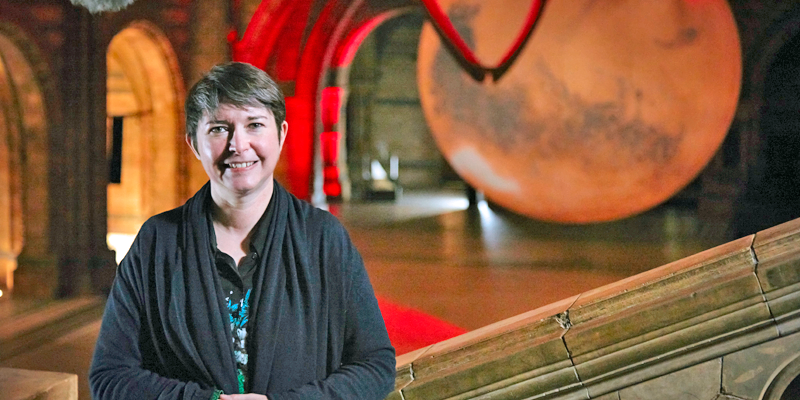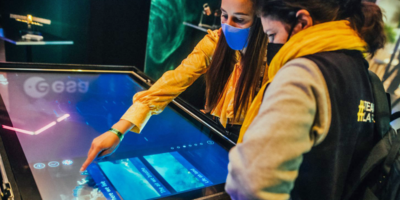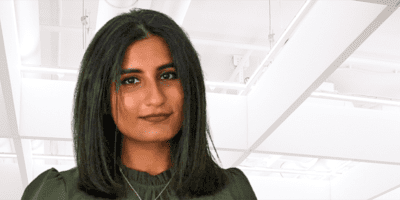Professor Caroline Smith is the head of earth sciences collections and principal curator of meteorites at the Natural History Museum in London, having been researching meteorites for more than two decades. Alongside this Caroline also does consultancy work with industrial, academic, and international space agency partners, studying and planning for future solar system sample return missions. She has been awarded a prestigious Aurora Fellowship from the UK Space Agency and even has an asteroid named after her.
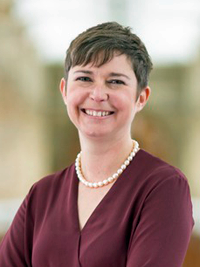
“I NEVER have a dull day. The variety of my job, in terms of what I do and the people that I work with, is really the most thrilling thing to me. Another exciting thing is the opportunity to continually be learning, to have my ideas and opinions challenged, and hopefully make a useful contribution to innovative scientific endeavours.”
Digging for gold, diamonds, and dinosaurs
I’ve always been interested in science and scientific subjects. My mum is convinced that I got into geology when I was about seven or eight. My father was a senior manager at Pan American, so we used to go to the States a lot, and we had very good friends who lived in Montana. They had an amazing ranch in the foothills of the Rockies.
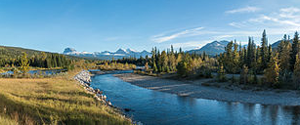
So, my family would venture out with Uncle Bob and Auntie Midge, who were not blood relations, but very good friends. We would go on adventures with them, their dogs, and a hammer and some safety glasses, and bash up rocks, looking for gold, diamonds, and dinosaurs. Knowing what I do now about geology I realise that I would have been very unlikely to find gold, diamonds, or dinosaurs in that area of Montana, but I just was so curious, I really liked looking for things.
A lot of people might say that I’m just a naturally nosy person. I’m very curious. I like to find things out. “Why is that like that? Why did that happen? What’s going on over there?”
An injury that led to an opportunity
I got pretty good GCSEs but no A-star grades (although I like to remind some of my younger colleagues that is because A-star grades had not been invented when I did my GCSEs…!) I went on to college to do A-levels, and at that point, I wanted to be an aeronautical engineer, so I studied physics and maths.
My college was very unusual in that it offered A-level geology and so for my third subject I thought: “Brilliant, that could be a really interesting A-level that keeps me sane alongside the physics and maths.” I ended up hating physics and maths and really loving geology.
I don’t want to embarrass myself, but I got the most abysmal A-level grades for various reasons. However, I was very lucky I’d applied to the University of St. Andrews to do geology. Unbelievably, despite my terrible A-level grades, they took a punt on me and let me in.
So, I did a geology degree at St. Andrews, which I really, really loved. I spent some happy years up there, but I also hurt my knee very badly playing rugby, which meant I had to have a cruciate ligament reconstruction.
Not only was that inconvenient in terms of socialising, but it was very disruptive in terms of my degree because, if you study geology at any university, especially a British university, the summer between your penultimate and final year is spent doing fieldwork. As I was waiting for my knee operation, I wasn’t able to do fieldwork for my final year project dissertation, so I had to do a lab-based project.
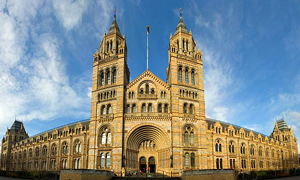
In my third year, I did a project on the formation of the solar system and impact cratering, and I was absolutely fascinated. So, that summer, I was very lucky to come to the Natural History Museum and work on a lab-based project where I classified new meteorites that had been found in Antarctica, three or four years before that nobody had looked at yet.
I just fell in love with meteorites as objects, and I really fell in love with the museum as a scientific organisation and a place to work. So, I ended up doing a PhD in meteorites looking at the chemistry and the minerals in a type of meteorite called a ureilite. I was co-supervised by people here at the museum, and I used to look at samples in our collection and use different instrumentation that’s based in our amazing analytical laboratories.
I then ended up doing a couple of postdocs, and I came back to the museum in 2005, as their meteorites curator. I’ve now climbed the greasy pole to become the head of Earth Sciences Collections.
Working at the heart of UK science
On a day-to-day basis, I go to a lot of meetings about other people ‘doing’ science. One of my main roles is to make sure that we are curating and using the collections in a way that fulfils all our statutory obligations, and so that we’re making the collections available for researchers within the museum, as well as around the UK, Europe, and the rest of the world. Every year we send out tens of thousands of specimens, from over 80 million objects that we have in the museum, for scientists around the world to study in their own labs.
We also have many hundreds of scientific visits too and as part of those, thousands of visitors come behind the scenes here to look at our collections, so we’re a really major part of UK scientific infrastructure, and a big part of my role is to manage that. I make sure that my team has the resources they need to be able to fulfil those access requests.
I also keep my hand in at ‘doing’ science. So, occasionally I go and haunt the labs to do some analysis. I’m doing some work at the moment with my postgraduate Fellow on the Mars 2020 Mission. I’m working with him looking at some of the rocks that the Mars 2020 Perseverance Rover is finding on Mars, and we’re helping with the interpretation of what those rocks are.
I also do a lot of work with the UK Space Agency ,the European Space Agency (ESA) and NASA, helping to plan for future space missions to places like Mars, to asteroids, to the moon. If those missions involve what’s called ‘sample return’, where they go find and pick up interesting rocks in those places and bring them back to Earth, we look at how we would curate and scientifically study those rocks.
On any particular day, I can have meetings to do with the museum or I can suddenly get a phone call from ESA saying: “We’d like you to come and review this document,” or “We’d like you to come to this meeting.” So, it can be quite varied, and no two days are the same.
A job like no other
I think working with an amazing bunch of people, both at the museum, but also in my space exploration and planetary science work, is the best thing about my job. I work with people who just started their professional careers, like PhD students, up to people who are professors, or Fellows of the Royal Society. The opportunity to work and learn from them, and get different opinions that will get my mind changed is probably the thing I find most exciting.
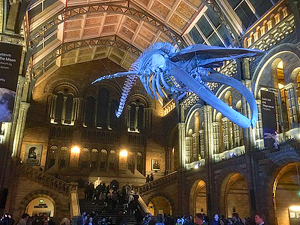
Also, coming back into the museum, being able to come into our spectacular Hintze Hall and see ‘Hope, the blue whale’, and enjoy this beautiful building is an amazing privilege. Then, going from that older part of the museum to downstairs and work in the labs, to be able to use cutting-edge instrumentation, to look at a rock that nobody’s ever looked at before and find a new mineral, is very exciting.
I NEVER have a dull day. The variety of my job, in terms of what I do and the people that I work with, is really the most thrilling thing to me. Another exciting thing is the opportunity to continually be learning, to have my ideas and opinions challenged, and hopefully make a useful contribution to innovative scientific endeavours.
Dealing with a crisis
One of my responsibilities is to sit on the museum’s crisis management team, so, as you can imagine, we had quite a few meetings just prior to the first COVID lockdown, because we could all tell that something major was going to be happening. We had a lot of very intensive work just prior to lockdown to make sure that the museum buildings and the collections within it could be left in a state that was secure, and for a skeleton staff to be on site.
We had to work very closely with our colleagues in, for example, estates and security. We didn’t have any issues, primarily because we were able to close down the site in a safe way, which took a lot of effort. It was also quite stressful, but we were able to do it.
COVID has obviously been quite disruptive, but we’ve been able to still do a lot of really good things. In terms of my work on space exploration, we’ve been able to successfully continue to have international team meetings using tools like Zoom or MS Teams, and those have actually worked quite well.
In some ways, there have been benefits to working in that way, although I do very much miss the face-to-face human contact. I believe this contact is essential when we are discussing quite controversial topics in meetings. I don’t mean ‘controversial’ in a negative way, but rather contentious topics, those that are a bit confusing and complex, and we’re trying to find a consensus.
It’s very different sitting around a table with a group of disagreeing scientists, because scientists often disagree with each other, so when you’re trying to find consensus being able to look at somebody straight in the eye, or see that they’re tapping their leg under a table because they’re not happy, really helps.
So, just seeing a head and a screen, or indeed, just seeing a name because you can’t see the video because somebody’s bandwidth is slow, hasn’t always been ideal, but on the whole, it’s worked very well. In some ways, we’ve been able to have meetings with colleagues who maybe wouldn’t have been able to attend to face to face meeting because they have childcare or other care issues, but they have been able to attend via Teams and Zoom. Therefore, I would say for all of the negative things, there’s actually been some positives about it as well.
Obviously, it’s been challenging for people, both professionally and personally, so I’m pleased to see that we do seem to be coming out of it, fingers crossed.
The Mars 2020 Mission explained
The work that I’m doing with my postgraduate Fellow and others on the Mars 2020 Mission essentially consists of looking at the minerals and the chemistry of different rocks that we are able to observe and then collect samples of them of using the Mars Rover. We will hopefully be able to get these samples to Earth in about ten years’ time.
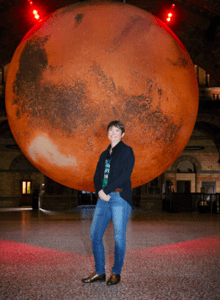
It’s really nice to be involved in not only trying to interpret what those rocks are on Mars, using the fantastic instruments that are on the mission, but also being involved in a tantalising opportunity. These samples will be the first of their type returned to Earth, and we will be able to see what they’re like, using the full breadth and strength of the instrumentation that we have on Earth.
The Mars 2020 Rover is an amazing piece of engineering and scientific achievement, and it has got fantastic scientific payload on it, but you can never miniaturise the types of instrumentation that you need to answer the really big scientific questions like: ‘Is there evidence of life in that sample?’ You can never miniaturise the types of instruments and put them on a Rover, so you really need to bring those samples back and study them, using the whole wealth of technology that we have available to us in laboratories around the world.
It’s very exciting to be part of that end-to-end process- being able to help look at those samples on Mars, look at their geological context, and then hopefully get them back to labs on Earth and be able to study them in intensive detail. Hopefully, we will get them back in 2033. It’s a complicated and long project, but, very pleasingly, this mission is still a top priority of NASA.
NASA carries out something called a decadal survey, which is where the NASA community says what sort of scientific priorities they think there should be for NASA science. The most recent decadal survey has just been released on 19th April 2022, and sample return is still considered to be a top priority! Therefore, I am very confident that we will get some of the samples back to be able to study on Earth in my lifetime.
Mars Sample Return is so big that it’s not just the Mars 2020 mission, it’s multiple missions over many years. It is very challenging in terms of engineering, in terms of science, and therefore very expensive. Therefore, NASA is working very closely with the ESA, so it’s really nice to see that the Mars 2020 Mission is just the start and the campaign is a truly international effort as well.
Cultural differences that strengthen a relationship
Since this mission and the whole campaign is international, there are cultural differences in the people working on it. I think culturally, we approach things very differently: Even just within the European context, there are several approaches. That is not necessarily a good thing nor a bad thing. It means you get different points of view, different areas of expertise, different ways of thinking of things.
But again, it sometimes means that, especially if something is a bit controversial, finding a consensus can be a bit more challenging. But it also means that you are not just falling into the trap of groupthink all the time, because everyone is sort of thinking in the same way.
Life on Mars?
The Mars 2020 Mission is very interesting in terms of its scientific goals. Not only is it looking to evaluate the geological and environmental history of the very early period of Mars, and to see whether the environment was conducive for life, but it’s also designed to do tests to work out what that environment of Mars is like today, and what we would need for its human exploration. So, it’s looking at the past but also into the future, which is quite incredible when you think about the very good job that Rover is doing.
For example, one thing that we know, or we’re pretty sure was the case, is that in the first billion years of our solar system, Mars probably had a much more conducive environment for life to start than the Earth did. So, there is a strange but very interesting proposition that life could have started on Mars before it started on the Earth.
Therefore, one of the aims of the Mars 2020 and Europe’s ExoMars missions is to go to the geological areas of Mars, where there are rocks of the right type and of the right age, that tell us what would have been the fossil signatures of the early life that could have been formed on Mars.
That can give us a better idea of how life starts on planets, evidence that we don’t have recorded on the Earth because of the different geological processes that happened here. So, there is a link between the early Earth and early Mars in what Mars can actually tell us about the Earth.
Furthermore, Mars has gone through massive environmental change as it has lost its atmosphere. This means that it is a very barren planet: It can be quite warm in places and very cold in others. One of the things that would not be good for current life at the surface of Mars today is its strong ultraviolet light, which is very damaging.
So, the Mars 2020 Rover has some materials on it that would be the actual types of materials that astronauts’ spacesuits would be made from. These are being monitored to see how they stand up to this very harsh environment at the Martian surface.
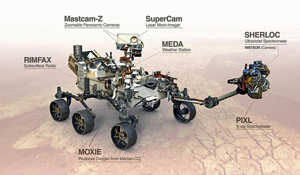
Another piece of scientific payload on the Mars 2020 Rover is called the MOXIE (Mars Oxygen In-situ Resource Utilization Experiment) instrument. This is basically an instrument to try and extract oxygen from Mars’ very carbon dioxide-rich atmosphere, and that has worked really well! We can now show that we can quite successfully make enough oxygen that you would need for breathable air, as well as potentially use as a fuel source, for human exploration of Mars.
The exciting world of the space industry
Space is a very exciting business to be in as you never really know what’s going to come next. Some people find that a bit challenging, but I personally find it very exciting: “What’s the next big mission? What’s happening next?”
I would say that if you’re not sure about getting into space, reach out; there are lots of STEM and space ambassadors, and they might be able to give you some tips and tricks, they might be able to put you in touch with the right people.
UK Space Agency has got quite a lot of information on their website about how you could get into the space industry. I can tell you, there are a lot of ways to get in. I have friends who work in the space industry who’ve come in from the engineering side, for instance. Many of those people studied something called systems engineering. So, that’s a route in, but it’s not the only route.
Obviously, you have somebody like me, who’s come in more via a planetary science route, although I’m a geologist by training, but you use the same sorts of techniques to study extra-terrestrial rocks as you do terrestrial rocks. There are people who come in from physics chemistry and biological backgrounds as well.
There are a lot of opportunities in the space industry, as it is a growing sector in the UK, both in terms of the engineering industry side, but also of the scientific side.
Natural History Museum’s new science and digitisation centre
For the Mars 2020 Mission, the Rover has just finished what’s called a rapid traverse. Therefore, we’re in a new part of the Jezero Crater, where it landed, which is really exciting. We are looking forward to seeing some different types of rocks and other things.
I’m also excited about the NASA decadal survey that has just come out and some of the recommendations in there. I literally have not had a chance to read it, but I’ve seen some of the highlights, and it looks very interesting.
I’m very interested in the work we’re doing at the museum about building a new science and digitisation centre at Harwell in Oxfordshire. That’s a massive project, as we’re going to be moving about 34% of our specimens to the new facility. The plan is to, through digitisation, try to make our collections more accessible for people to study and look at them. That’s from taking photographs to actually doing some chemical analyses and biological analyses.
Finally, I am excited to continue to work with the UK Space Agency, ESA, and NASA, preparing for the samples that we are confident will come back from Mars in about 2033. I want to make sure that once those samples come back, we can do the best science on those samples using the best equipment and the best people in a collaborative and collegiate way.
Main image © Trustees of the Natural History Museum, London
Montana image © Martin Kraft, CC BY-SA 3.0
Natural History Museum, London image © Diliff, CC BY-SA 3.0
‘Hope, the blue whale image © Murgatroyd49, CC BY-SA 4.0
Reference links
- https://www.linkedin.com/in/caroline-smith-b5a89525/
- https://www.nhm.ac.uk/our-science/departments-and-staff/staff-directory/caroline-smith.html
- https://www.nhm.ac.uk/
- https://www.nhm.ac.uk/our-science/departments-and-staff/earth-sciences.html
- https://twitter.com/NHM_London
- https://www.instagram.com/natural_history_museum
- https://www.facebook.com/naturalhistorymuseum/

